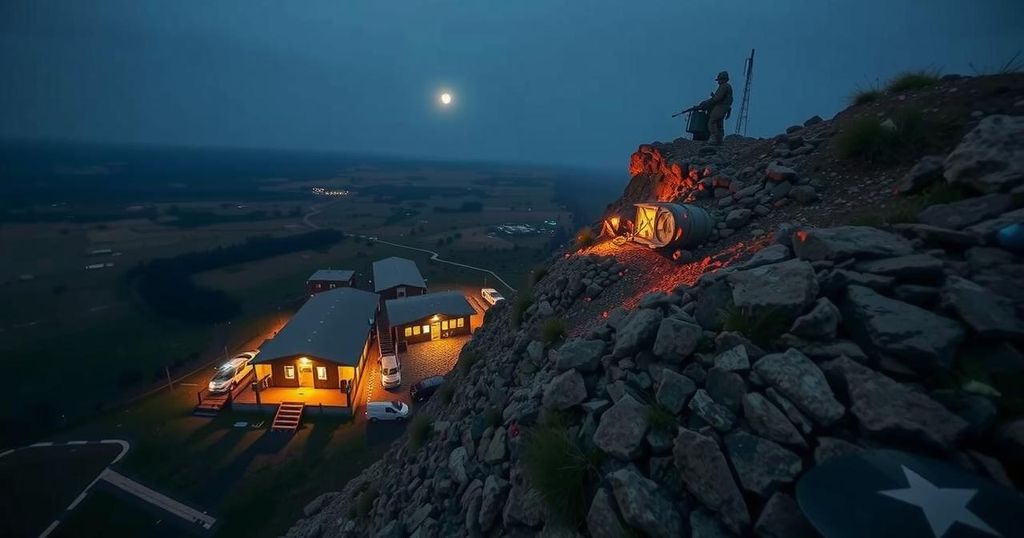Russia Reinforces Military Presence Near Golan Heights Amid Israeli Tensions

The Russian army has bolstered its presence in southern Syria to prevent potential Israeli escalations, enhancing nine observation posts in coordination with the Damascus government. This comes amidst Israeli efforts to build a separation wall in the Golan Heights, which the UN has condemned as a violation of ceasefire agreements. Former Israeli defense minister Lieberman has threatened further territorial claims if Syria continues to be utilized by hostile forces. Recent airstrikes by Israel indicate a marked uptick in military engagement in the region, raising security concerns.
The Russian military has expanded its presence in southern Syria, establishing nine observation posts in cooperation with the Damascus government to mitigate potential escalations from Israeli forces, as reported by Lebanese daily Al Akhbar on November 19. These posts are strategically situated in the Daraa and Quneitra regions, adjacent to the Israeli-occupied Golan Heights. Recent Israeli initiatives, including the construction of a separation wall in the disengagement zone, have raised tensions, invoking accusations from the United Nations of violating a longstanding ceasefire with Syria.
The wall’s construction, confirmed by satellite images showing extensive activity along the Alpha Line, indicates an increased Israeli military focus in the area. Former Israeli defense minister Avigdor Lieberman has issued a threat that Israel may seize the Syrian segment of Mount Hermon if Syria continues to serve as a logistical base for adversarial forces. Amidst these developments, joint operations by Russian and Syrian forces have intensified with the objective of combating extremist groups supported by the West.
Russian forces are reportedly conducting both aerial and ground monitoring to bolster security, facilitate the return of displaced residents, and stabilize the region, which has a history of being controlled by Israeli-backed militants prior to a disengagement deal brokered by Russia. Allegations persist regarding Israel’s actions in the Golan Heights, with international law cited as being in conflict with the imposition of Israeli citizenship and settlement expansion efforts.
Furthermore, the frequency of Israeli airstrikes against Syrian positions has surged following the escalation of conflict in Lebanon, with many strikes occurring near the Russian Hmeimim airbase. This has prompted a response from Russian military forces, who have activated air defense systems in light of the increasing threats in the vicinity.
The ongoing tensions in the Syrian conflict involve multiple actors, including the Syrian government, Israeli forces, and Russian military involvement. The Golan Heights, a territory annexed by Israel in 1981, has been a flashpoint for conflicts and incursions, marked by military activities and territorial disputes. Russia’s role in Syria has evolved from mere military support to a more significant presence, seeking to stabilize the region amidst ongoing Israeli operations and the complex security dynamics involving various militant groups. The construction of separation barriers by Israel has further complicated relations and raised concerns about breaches of international agreements. Additionally, the military operations and monitoring efforts by Russia aim not only to secure its interests but also address the humanitarian crises stemming from the conflict, as internally displaced Syrians seek to return to their home regions in a war-torn country facing severe infrastructure challenges.
The increase of Russian military presence near the Israeli-occupied Golan Heights underscores the shifting dynamics in the region, particularly concerning Israel’s construction of a separation wall and its implications for local security. The partnership between Russian and Syrian forces aims to counter Western-backed extremist groups and maintain stability in southern Syria. Nevertheless, escalating tensions from Israeli airstrikes, alongside international legal violations, reflect the complexities of the conflict and highlight the ongoing struggle for control and security in the region.
Original Source: thecradle.co








